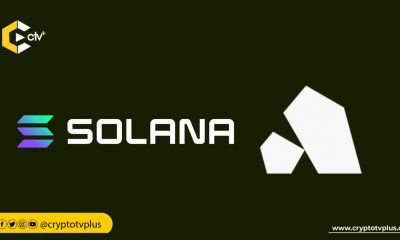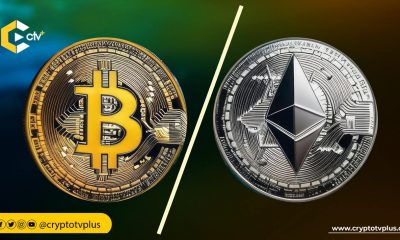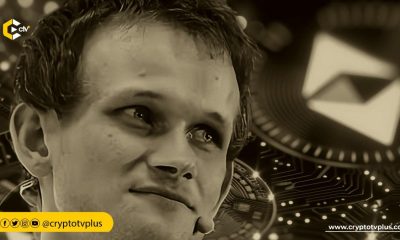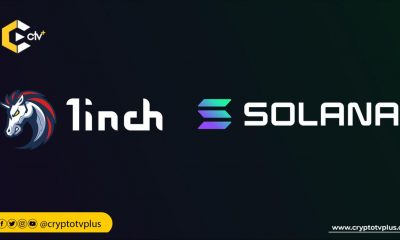News
Solana vs. Ethereum: Who will dominate tomorrow?

Ethereum and Solana are frequently measured against each other as major contenders in the world of smart contract-capable blockchains. With Solana’s arrival in 2020, it gained the reputation as an “Ethereum killer.” Over the years, Solana has positioned itself as a formidable rival to Ethereum.
Yet, the big question lingers: Will Solana overtake Ethereum as the blockchain landscape transforms, or will Ethereum’s shift from Proof of Work to Proof of Stake ensure it maintains its dominance as the preeminent smart contract blockchain?
This issue was at the forefront at Breakpoint 2024, where Avichal Garg, Co-founder and managing partner of Electric Capital; Ben Sparango, Head of Strategic BD at Solana Foundation and session host; and Santiago Roel Santos, Founder of the SRS Family Office, shared insights on which blockchain might ultimately take the lead.
According to Avichal Garg for a blockchain to be “future-proof,” it needs to adapt to changes, not just avoid failure today. He believes Ethereum is the only blockchain capable of this because it meets three key criteria: reliable technology, a large range of applications, and a broad, diverse user base.
Avichal noted that Ethereum has survived major challenges like hacks, upgrades, and government pressure. “Ethereum excels by being both decentralized and credibly neutral [and] it’s the only smart contracting blockchain that the US government has acknowledged is sufficiently decentralized to be not a security,” he said.
Even though Ethereum isn’t perfect, like JavaScript on the web, its momentum and large network of developers, users, and standards make it likely to succeed in the long term. He also added that per Electric Capital’s developer report, Ethereum has nearly 9,000 active developers working on its open-source ecosystem each month.
In addition, another 20,000 to 30,000 developers are likely working on closed-source projects like wallets and custodians built on Ethereum. This developer community is about ten times larger than any other blockchain ecosystem and has also set important standards, such as ERC-721 and ERC-1155, which have become key to how things work across the network.
As more developers, institutions, and services adopt these standards, the network effect grows stronger, making Ethereum’s ecosystem harder to match.
Other blockchains like Solana, Avalanche, and Polygon have even adopted Ethereum’s model because of its well-established tools and developer base. This large developer community and network effect make Ethereum incredibly resilient and “future-proof.”
Users on Ethereum
On the user side, Ethereum is also leading. The most popular uses for blockchains right now involve programmable money, storing value, and moving money through code—all areas where Ethereum performs best.
It has the widest variety of users, with 250 million wallets, often seeing over a million active wallets per day. Big companies like Microsoft, JP Morgan, and even governments use Ethereum. It holds $50 billion in total value locked (TVL) and $150 billion in stablecoins, with major institutions like BlackRock involved.
Whether you look at the number of users, the types of users (from retail investors to global institutions), or the amount of money on the chain, he stressed that Ethereum stands out as the most future-proof blockchain.
Solana will lead the park
Conversely, Santiago Roel Santos, founder of SRS Family Office, stated that the main purpose of blockchains is simple: they are tools for tracking and exchanging financial assets. In his view, the best blockchain for this is one that offers fast, low-latency transactions on a single, unified system—like Solana. He called Solana the “NASDAQ on the blockchain” because of its speed and efficiency.
Santiago believes this is the primary use case for blockchains and that Solana is better suited for this than Ethereum. As a result, he sees Solana as more “future-proof” because it is built for this core function.
Although he acknowledged that some people might raise concerns about issues like Miner Extractable Value (MEV), which can create problems for users, he argued that this is an issue for all blockchains, not just Solana. Santiago believes Solana is already working on solutions to improve the user experience and solve these problems.
Better user experience
Santiago also highlighted how Solana provides a more seamless experience for users compared to Ethereum, which has a more fragmented system with multiple versions of assets like USDC across different chains. This can make things confusing for users. On Solana, everything is more integrated, which makes it easier for users to transact.
Although Ethereum has more developers and has been around longer, Santiago argued that Solana’s focus on speed, low cost, and a better user experience makes it the more future-proof option. He also pointed out that as demand for block space grows, Solana is likely to become more profitable for validators compared to Ethereum because it’s where users are transacting the most.
Reverse argument – 1
During the discussion, the host encouraged guests to back each other’s ideas, prompting Avichal to express that, despite his belief in Ethereum’s potential as the future blockchain instead of Solana, he acknowledges that Ethereum has made technical missteps that hinder its long-term scalability.
For example, Ethereum’s EVM is difficult to scale, and using Layer 2 (L2) solutions could break one of Ethereum’s key strengths: the ability to perform complex, interconnected transactions (“atomic composability”). Meanwhile, Solana’s tech is more scalable, positioning it as more future-proof.
On the developer side, Avichal emphasized quality over quantity. Even though Ethereum has more developers, he noted that Solana has quickly grown into a top ecosystem for developers despite its later start. Solana benefits from the use of the Rust programming language, which has millions of developers and key advantages like performance and safety for smart contracts.
Avichal compared user numbers across tech industries, highlighting that early market dominance doesn’t ensure long-term success. For instance, although Myspace was once larger than Facebook, Facebook grew more rapidly and ultimately took the lead.
Read also: DePINs must balance importance with cost-effectiveness; Experts weigh in
Similarly, Solana is rapidly gaining users, with 5 million daily active wallets. Solana also has more users engaging with NFTs, meme coins, and other activities than Ethereum, thanks to its lower fees and faster transactions.
In terms of capital efficiency, Avichal believes Solana is also ahead. While Ethereum has more total value locked (TVL), he argues that Solana’s focus on transaction volume and efficient use of capital is a better indicator of future success. Solana’s low fees and high throughput make it more appealing for users and developers.
Reverse argument – 2
Santiago, who previously stood for Solana, also outlined two key reasons he believes Solana may not be as future-proof as other blockchains. First was the issue of “liveness,” which refers to the network’s ability to remain operational and responsive.
He pointed out that persistent liveness issues could undermine user trust and degrade the experience for both developers and users. A lack of client diversity can exacerbate this problem, as it offers fewer guarantees and protections against catastrophic bugs.
While he acknowledged that solutions like “Firedancer” could help improve this situation, he warned that if such improvements don’t materialize, Solana may need to reassess its strategy, especially given the increasing competition from other well-resourced, high-throughput chains.
Second, he discussed the concern of “toxic MEV,” particularly about the prevalence of meme coins and pump-and-dump schemes on Solana. He emphasized that while all chains have issues with toxic MEV, Solana’s current landscape attracts more of these problematic assets.
This can lead to front-running attacks, which severely impact the user experience. Institutional players like BlackRock and PayPal may hesitate to engage with Solana due to these concerns, as they seek stable environments for deployment.
Santiago thinks it’s important for Solana to work on reducing these harmful issues and to provide good solutions. If these problems aren’t fixed, they could hurt Solana’s chances for success and make it weaker in a competitive environment.

























Pingback: EIP-7781 proposes a 50% boost in Ethereum's network capacity | CryptoTvplus - The Leading Blockchain Media Firm